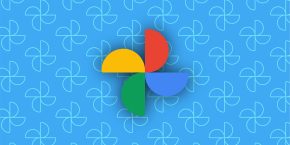
Since I/O 2018, Google Photos has gained a number of features like AI-powered smart suggestions and the ability to favorite images. The latest version of the Android client is rolling out today and details Google One integration, reclaiming storage by reducing image quality, and more.
About APK Insight: In this ‘APK Insight’ post, we’ve decompiled the latest version of an application that Google uploaded to the Play Store. When we decompile these files (called APKs, in the case of Android apps), we’re able to see various lines of code within that hint at possible future features. Keep in mind that Google may or may not ever ship these features, and our interpretation of what they are may be imperfect. We’ll try to enable those that are closer to being finished, however, to show you how they’ll look in the case that they do ship. With that in mind, read on.
Google One integration
On the storage front, Google One is just a rebrand that does not alter how photos and videos from your devices are backed up to the cloud. New strings in version 3.23 are the first to explicitly cite “googleone,” with that branding soon appearing in Photos.
<string name=”photos_cloudstorage_buystorage_googleone_strings_storage_upgraded_message”>Google storage successfully upgraded</string>
<string name=”photos_devicesetup_google_one_description”>Photos & videos are set to back up in full resolution using storage from your Google One membership</string>
Downgrading quality to reclaim storage
Google Photos is working on adding a feature to the Android client that will give users more options once they are low on storage. This functionality has long been accessible on the web (Settings > Recover storage), but just now coming to the mobile apps.
You will be presented with the usual option to buy more space, as well as a new ability to reduce the “quality of existing items.” In essence, this new setting would downgrade images uploaded in Original quality to Google’s “High quality” tier.
<string name=”photos_cloudstorage_assistant_storage_1gb_left_card_description”>Your photos & videos will stop backing up if you run out of storage. To continue backup, buy more storage or change backup options.</string>
<string name=”photos_cloudstorage_ui_backupoptions_compress_existing_items”>Recover %d GB of storage by reducing quality of existing items.</string>
This compression is permanent, with Google giving users the option to download the original quality and files via Google Takeout.
<string name=”photos_cloudstorage_ui_backupoptions_resume_with_compression_message”>”Existing items will be reduced in quality to recover %d GB. This can’t be undone.”
<string name=”photos_cloudstorage_ui_backupoptions_save_files_dialog_message”>Before resuming backup, you can download your original photos & videos from takeout.google.com</string>
<string name=”photos_cloudstorage_ui_backupoptions_save_original_files_link”>Want to keep original files?</string>
Blur adjustments
Since earlier this year, Google Photos has been working on a blur adjustments feature possibly related to the Pixel 2’s Portrait Mode, or an entirely new software-based equivalent. The latest strings more clearly detail how users will be able to adjust blur intensity and foreground blur with sliders, much like the other editing options today
<string name=”photos_photoeditor_adjustments_depth”>Depth</string>
<string name=”photos_photoeditor_adjustments_depth_blur_intensity”>Blur</string>
<string name=”photos_photoeditor_adjustments_depth_foreground_blur”>Foreground blur</string>
How to update?
Version 3.23 of Google Photos is rolling out now via the Play Store. We do not post APKs to download directly given the legal challenges associated with copyright and possibility of removal. Meanwhile, that model moving forward is perilous given upcoming system-level changes from Android App Bundles and Google Play’s Dynamic Delivery.
Dylan contributed to this article
Check out 9to5Google on YouTube for more news:
FTC: We use income earning auto affiliate links. More.

Comments